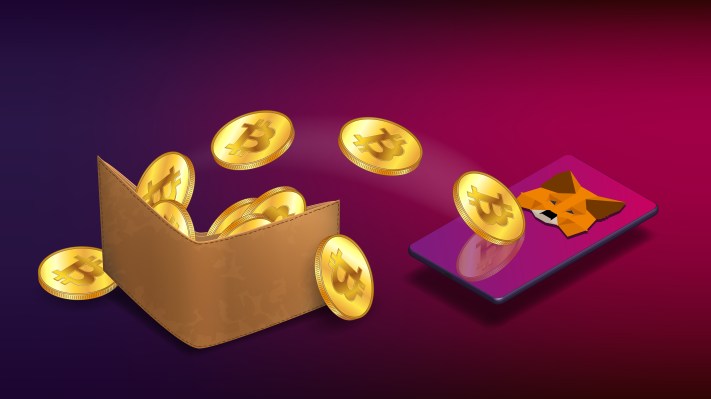Six years ago, Dan Finlay and Aaron Davis met while working at Apple and conjured an idea around making a web extension backing the layer-1 blockchain Ethereum so developers could play with it.
That project became MetaMask, now the world’s largest non-custodial crypto wallet.
What was supposed to be a short project for Finlay and Davis accelerated into a global product that’s used by about 20 million monthly active users (MAUs), Finlay told TechCrunch.
“So much has changed,” Finlay said. “We thought it was going to be a quick in-and-out thing. Aaron thought we’d be working on it for a few weeks; I thought it would be a few months. It became clear pretty quickly that wasn’t the case.”
The crypto wallet saw immense growth over the past two years, from just 1.1 million MAUs at the end of 2020 to 10 million MAUs in August 2021. MetaMask’s monthly user count peaked at 30 million in March 2022 and has since declined to about 20 million, Finlay said.
The decline is most likely due to the current bearish sentiment surrounding the crypto ecosystem, Finlay added, but the company’s goal is to grow its MAU number regardless.
“Each time there is a bubble burst, we lose a lot of people who got hurt, but there are more people who see something a little longer term and stick around and build the next wave of applications,” Finlay commented. “We’ve seen crashes like this before and it could take a while for [the market] to rebuild. When people get hurt, they don’t want to come back, so we’re really focused on longer-term work and building infrastructure that makes the next wave of applications safer for users, more understandable and makes their assets more secure.”
The company’s expansion has been global, giving it a large market for finding new users. Today, MetaMask said its top 10 markets are the United States, Brazil, the Philippines, Indonesia, India, the United Kingdom, Russia, France, Turkey and Germany.
“The different areas tend to have different use cases driving them,” Finlay said. “Sometimes there’s cultural use cases, like Indonesia had Axie Infinity and it became a big play-to-earn phenomena. The U.S. had the majority of the NFT buzz, and so when you look at use cases and try to segment them, the cool thing about this product is that it allows people to make new things faster than we can understand.”
Although the crypto markets have been hit hard over the past few months, the crypto wallet is looking past the bear market and focusing on figuring out what the future of web3 holds.
“Obviously the crypto market crash rippled through everything. Everyone who was involved in crypto was affected in some way,” Finlay said. “But MetaMask is trying to be less opinionated and get out of users’ way.”
The team is focused on allowing users to add things to their wallets, even if it hasn’t been designed internally, Finlay said. “We’re working on letting the user connect applications with the minimum required permission, and that’s going to be a continued theme.”
In January 2022, MetaMask launched Snaps, a system that allows any developer to expand the capabilities of their decentralized application and, in turn, the MetaMask crypto wallet, through “permissionless experiences.” Basically, developers can build on MetaMask without needing support or approval from the team.
Since then, about 600 developers have interacted with the platform and a number of products have been launched.
“While it doesn’t have to be financialized, just making things available to others can be powerful,” Finlay said. “Having tools to let people better realize the value they have — a lot of people are told their work isn’t valuable, and I think creating tools where people can value their own work and make offers to the world has a lot of potential. There’s a lot of discovery of work to be done and is missing from the world today.”
